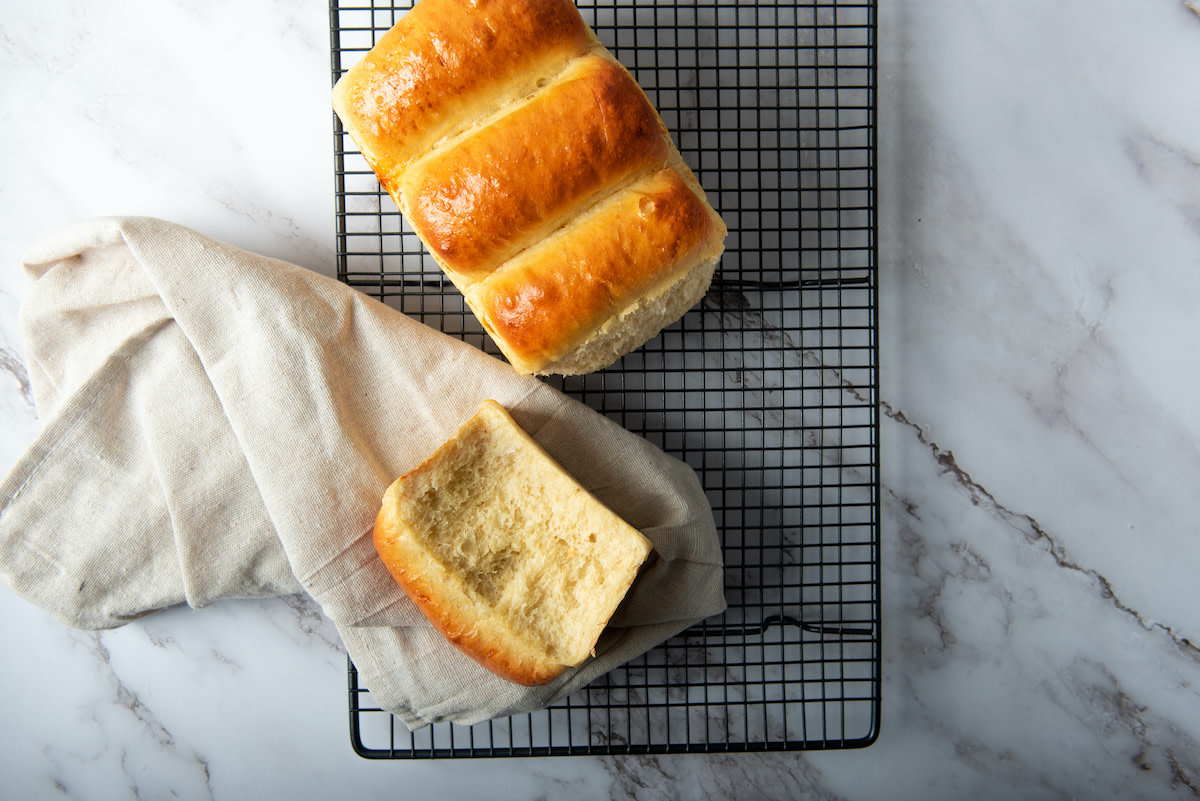Milk Bread Recipe: How to Make Japanese Milk Bread
Written by MasterClass
Last updated: Feb 18, 2025 • 3 min read
Learn the simple technique for making fluffy Japanese milk bread.
Learn From the Best
What Is Milk Bread?
Japanese milk bread—also called shokupan and Hokkaido milk bread—is a fluffy, yeasted white bread that gets its tender texture from a technique called tangzhong. The tangzhong is a water roux that involves heating flour and milk and/or water to make a slurry. The tangzhong allows the flour to absorb more liquid, yielding moist sandwich bread, buns, and cinnamon rolls.
4 Tips for Making Milk Bread
To achieve perfect milk bread, follow these tips:
- 1. Use the spoon-and-level method for dry ingredients. Spoon flour into your measuring cup—rather than using the measuring cup to scoop up the flour—then level using the back of a knife. This will yield more accurate measurements.
- 2. Get the temperature right. When making the tangzhong, a digital thermometer can precisely measure when the starch in the flour gelatinizes at 150 degrees Fahrenheit. If you don't have an instant-read thermometer, pay close attention to the texture, which will change when the tangzhong reaches this temperature.
- 3. Make tangzhong ahead. To make the tangzhong ahead of time, let the mixture cool slightly, then refrigerate until needed, up to 1 day. Bring the tangzhong to room temperature before mixing with the other ingredients.
- 4. Use bread flour. It can be tempting to substitute all-purpose flour for bread flour, but you won't get as much of a rise in your loaf. Bread flour is higher in protein and gluten, which allows bread dough to form a stable structure and rise higher.
Japanese Milk Bread Recipe
makes
1 9" x 5" loafprep time
40 mintotal time
4 hr 20 mincook time
40 minIngredients
For the tangzhong:
For the bread dough:
- 1
Make the tangzhong. In a small saucepan over low heat, combine 3 tablespoons of water with milk and bread flour. Whisking constantly, allow the mixture to gelatinize, about 3–5 minutes.
- 2
If you have an instant-read thermometer, the tangzhong should be 150 degrees Fahrenheit. If you do not, the mixture is at temperature when the whisk leaves lines in the bottom of the pan.
- 3
When the tangzhong is thick but still pourable, transfer the mixture to a measuring cup and cover it with plastic wrap.
- 4
Let the mixture cool to room temperature.
- 5
Make the bread dough. In the bowl of a stand mixer fitted with the dough hook attachment, combine flour, sugar, yeast, and salt, and mix at the low speed until just combined.
- 6
Add the room-temperature tangzhong, egg, and milk to the mixture to begin kneading. Knead on low speed until the dough is smooth and elastic, about 5 minutes.
- 7
Prepare the first rise. Shape the dough into a large ball and transfer to a large, lightly greased bowl. Cover with plastic wrap and let rise in a warm place until puffy, about 60 minutes (no more than 90 minutes).
- 8
Shape the loaf. Punch down the dough and gently transfer it to a lightly floured surface. Using a floured bench scraper, divide the dough into two equal pieces.
- 9
Roll out each piece of dough into a rectangle, then fold the short sides in like a letter. Roll out again to form rectangles, then, starting with the short end, roll into fat logs.
- 10
Prepare the second rise. Place each log of dough seam-side down near one short end of a lightly buttered 9" x 5" loaf pan. Cover with plastic wrap and let rise in a warm spot, proofing until logs meet in the center of the loaf pan, about 40 minutes.
- 11
Meanwhile, move the oven rack to the bottom position and preheat the oven to 350 degrees Fahrenheit.
- 12
Brush the top of the loaf with milk.
- 13
Bake on the bottom rack until golden brown, about 40 minutes.
- 14
Let cool in the pan for 10 minutes, then transfer to a wire rack to cool completely, at least 1 hour.
Become a better chef with the MasterClass Annual Membership. Gain access to exclusive video lessons taught by culinary masters, including Niki Nakayama, Gabriela Cámara, Chef Thomas Keller, Yotam Ottolenghi, Dominique Ansel, Gordon Ramsay, Alice Waters, and more.
